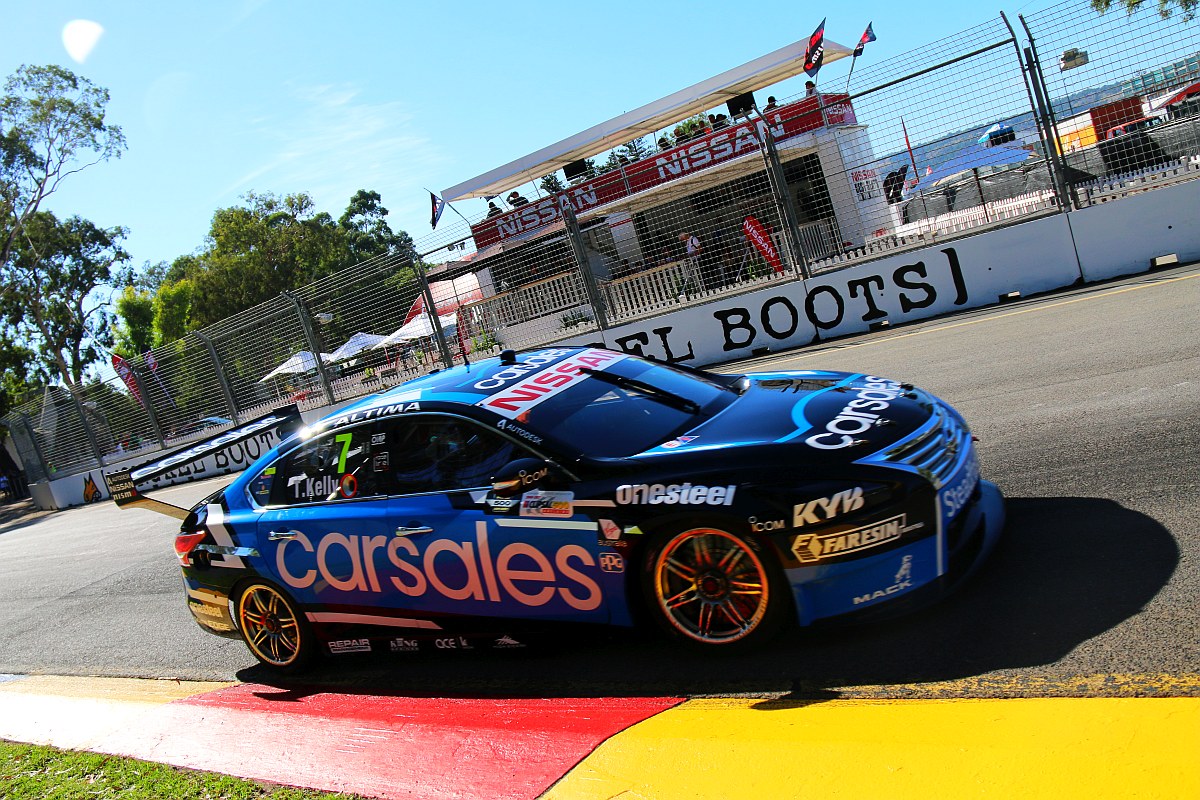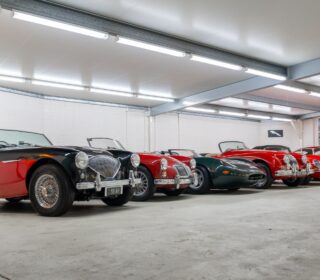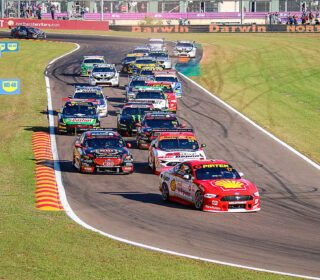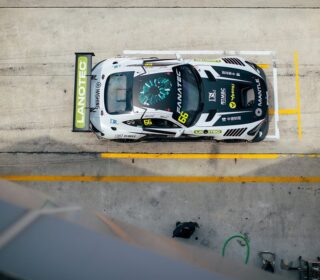THE BIG PICTURE: THE CAPTAIN AND CORPORATES

Captain Peter Janson officially turned 77 years of age earlier this month, though some suggest his New Zealand birthdate was in fact five years prior.
Whatever the truth, Janson was fine form, wearing his ever-present rich red smoking jacket as he celebrated with a big party in his eclectic – boarding on bizarre — inner city warehouse apartment, tucked down a small lane amid the Melbourne nightclub district.
For anyone under 30 years of age, the name Captain Peter Janson probably means nothing unless they’re a dedicated student of the sport.
If they are, they’ll know that ‘the Captain’ was a moderately successful Touring Car racer of the ‘70s and ‘80s, whose career high point in a variety of Holden Toranas and Commodores was finishing second at Bathurst two years in a row with Larry Perkins.
But Janson’s place in the history of our sport goes way beyond that singular, albeit rather impressive, statistic.
Janson, for example, is the man credited with inventing corporate hospitality in Australian motor sport.
He is also arguably the most colourful racing driver this country has ever seen.
Listing his profession as “Gentleman” on his business card – the contents of which I cannot repeat here (it was another time) – Janson was on the one hand the epitome of the wealthy socialite playboy racing driver, whose primarily interest was partying and going motor racing because it was good fun.
He approached Polo exactly the same way.
But on the other hand, he was a handy steerer capable of quite remarkable results – particularly at Bathurst, a track he loved – and he was an inveterate wheeler-dealer, a raconteur and entrepreneur, who is credited with paying for his racing and occasional rallying forays in the most inventive of ways.
According to legend, Janson’s trick was to get sponsorship in kind, rather than cash, so he’d literally take pallets or boxes of product, and then either sell them for cash or swap them for other product, which he would then sell for cash.
Thus, Janson had the sort of mainstream brand sponsors others in the sport could only dream about, and that’s because he chased product not cash, and that sort of deal was far easier for sponsors to accommodate.
The ‘art of the deal’ defined Peter’s very existence, and he was a genius at it.
Although ‘the Captain’ described himself as a “Gentlemen” in fact his profession was knowing everyone you should know, connecting people, making deals happen. It didn’t have a name then but today we’d call it ‘networking’.
One of my favourite memories of Peter is from the days when any sponsorship branding across the windscreen strip of cars was banned by CAMS.
Never one to worry too much about the strictures of rules, if indeed he even knew the rule beforehand, Janson did a sponsorship deal with NGK Spark Plugs, which required NGK branding across the top of the windscreen.
This wasn’t a problem for Peter – he simply changed his first name by Deed Poll to “NGK” and thus was able to run his name “NGK Janson” across the top of the windscreen for the duration of the sponsorship!
Mind you, my very favourite Janson story involves the one-make Holden Gemini series which used to run at Calder.
Janson was a front runner in that series and he was keen to win.
Back then, the build-up to the start of a race included a one minute board when the grid had to be cleared.
‘The Captain’ knew that the penalty for a jumped start was one minute so, thinking laterally, he figured that if he jumped the start at the one minute board and sped away, he’d likely gain enough time to win the race!
It worked a treat for a lap or two, but his plan came unstuck when the CAMS officials, displaying zero sense of humour (not much has changed!), black flagged him …
Peter can claim credit for inventing trackside corporate hospitality in Australian motor racing by the simple virtue of taking an idea he’d first used at horse racing events, of which he was equally fond.
There, Janson began using old converted double-decker buses to host sponsor guests with food, beverages and entertainment at Flemington (home of the Melbourne Cup) and he quickly figured he could do the same at motor racing.
So next thing you know, Peter had a fleet of double-decker buses going to the car races, especially to Sandown, where he got sponsors to brand-up the buses and therefore pay for the hospitality.
At the time that thinking was revolutionary and invitations to Janson’s buses highly sought-after … corporate hospitality has certainly come a long way since then.
Today, corporate hospitality is almost as important as the racing itself … for the sponsors perhaps, even more important.
Corporate hospitality provides the platform for sponsors to ‘entertain’ guests, a euphemism that really means getting them into one location to build a better relationship with them.
It’s also a method of rewarding customers, clients or staff, or as an incentive to drive sales.
And it’s very effective at all of those things … as well as a nice place to be as a guest, to watch the on-track action unfold in front of you.
With good food and wine laid on, monitors, pit tours, grid walks, comfortable seating away from the weather … corporate hospitality is a great way to introduce the sport to those who have never seen it before nor have scant interest.
An interesting phenomenon that I’ve witnessed first hand many times is the corporate guest’s wife who comes along to an event, begrudgingly, because hubby has to do it (it’s a work thing) and ends up loving the experience.
It’s then the wife who takes the initiative and drives the desire to get tickets to the next race or the following years’ event.
In many ways that encapsulates the challenge facing our sport … we all know it’s a fantastic, entertaining and exciting spectacle … but there are millions of people in Australia who don’t know that.
For the uninitiated it’s not even on their radar … or if it is, they’d say they have no interest at all or worse, a negative view of the sport.
But if we can get them there, get them to experience Supercar racing at its very best, we can often change their minds. We can make some lifelong fans.
Maybe we need some ‘flamboyant’ thinking like that originated by Captain Peter Janson?
Oh … one last thing. As for sobriquet ‘Captain’, well Janson was a Captain in the Indian Army and throughout his racing career here was also the Australian Emissary for the Indian state of Bhutan.
“Colourful” is an inadequate description.
WORDS: David Segal
IMAGE: Mark Walker
David Segal is perhaps best known to current motor sport fans as the long-time manager of current Supercars Championship stars Craig Lowndes and Will Davison, and Super 2 Championship front runner Jack LeBrocq. A 30-year absence from Journalism ends this year with David’s ‘The Big Picture’ column here on The Race Torque.














